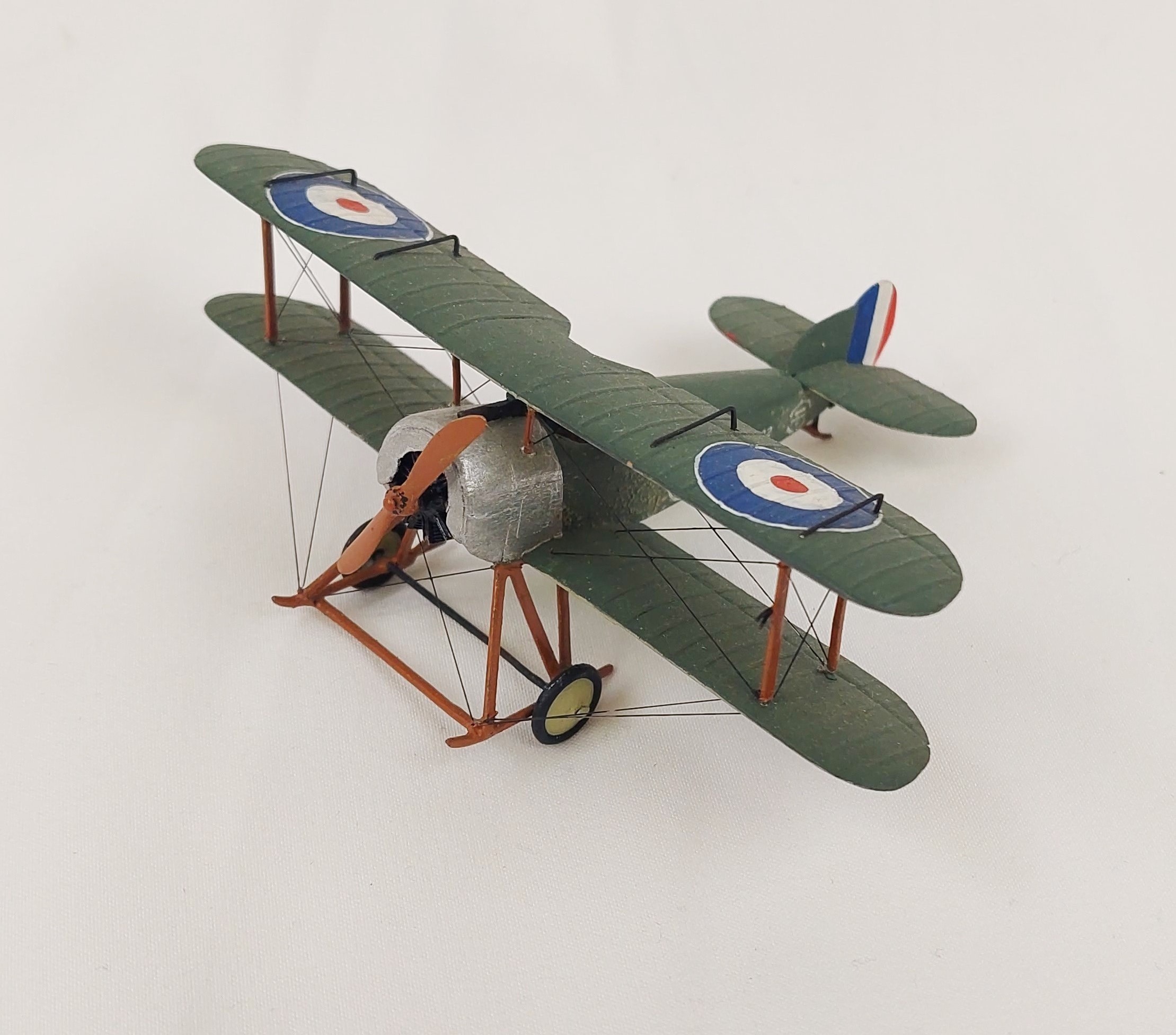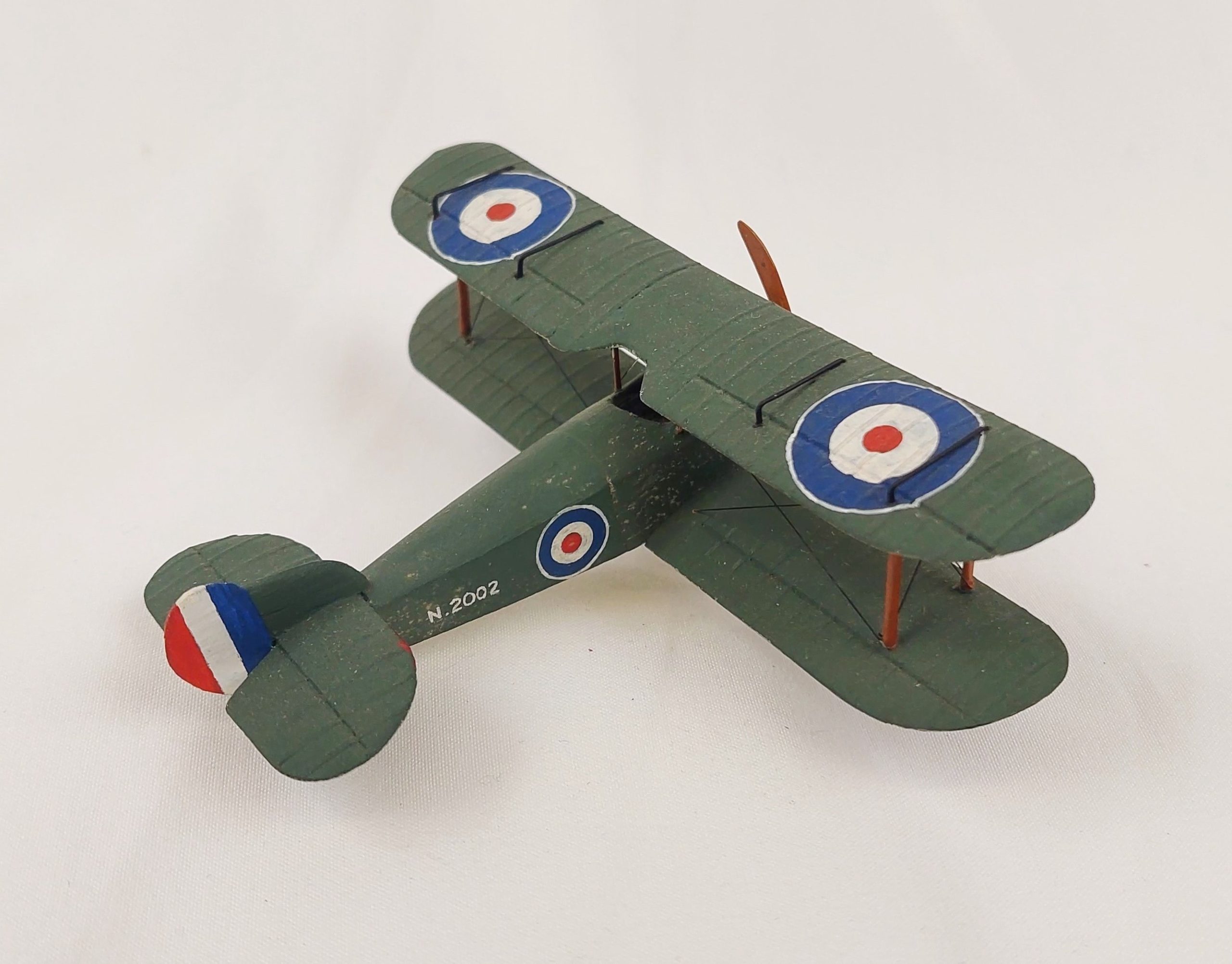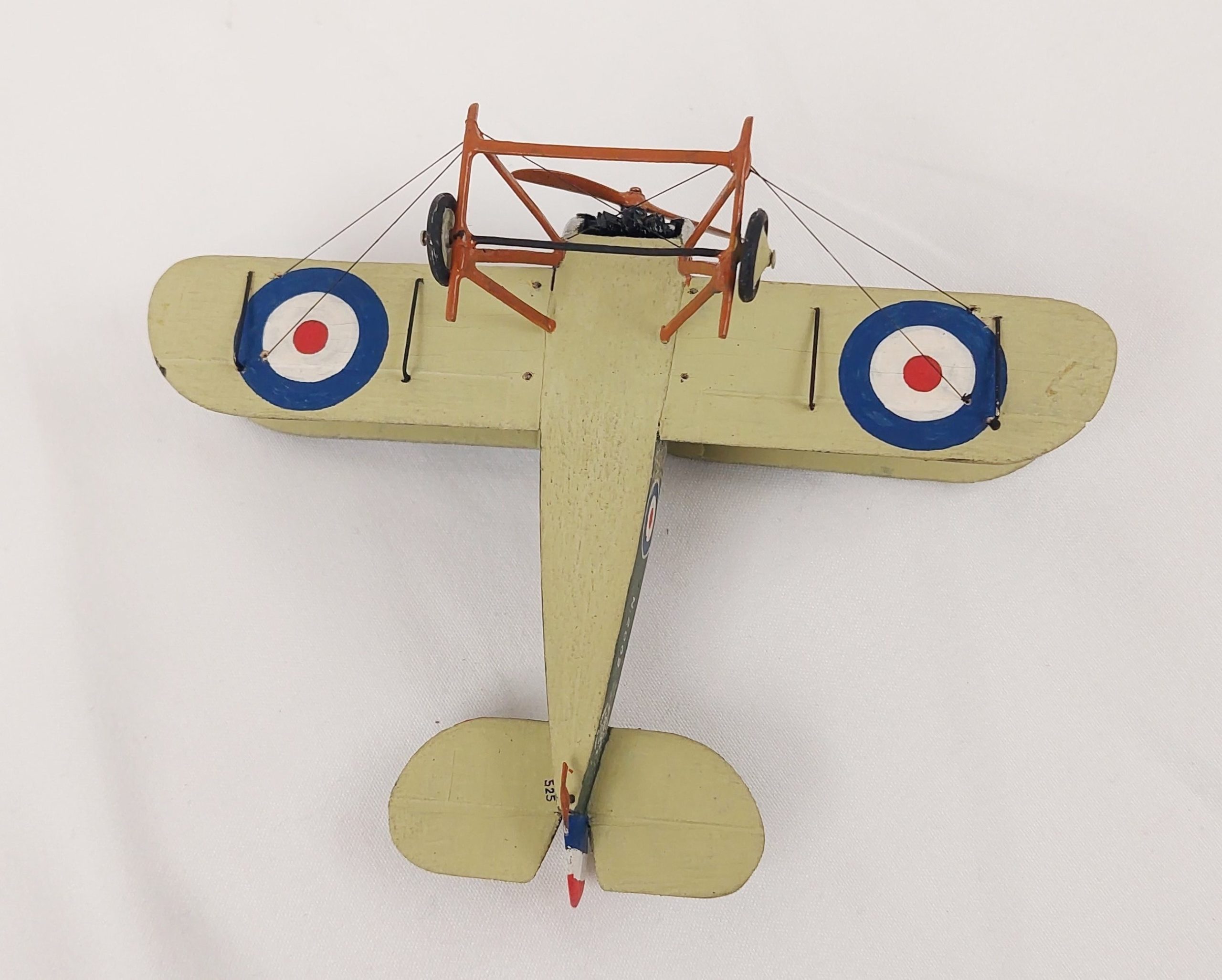~ 1930’s Givejoy Toys Skybirds Model Of WW1 British Sopwith Baby Fighter Aircraft ~
The Sopwith Baby was a British single-seat fighter aircraft developed and used during World War I. It was a smaller and lighter version of the earlier Sopwith Tabloid. Here are some key details about the Sopwith Baby fighter aircraft:
Development:
The Sopwith Baby was designed by the British aviation company Sopwith Aviation Company, which produced a range of successful aircraft during World War I. The development of the Baby was influenced by the need for a lightweight and versatile fighter aircraft for use by the Royal Naval Air Service (RNAS).
Design:
The Sopwith Baby was a single-seat, biplane aircraft with a fabric-covered wooden airframe. It featured a rotary engine, which was a common design choice for many World War I aircraft. It had ailerons on both the upper and lower wings, which provided good maneuverability. The aircraft’s design also incorporated features for naval use, including floatation bags for emergency water landings.
Operational Service:
The Sopwith Baby first entered service with the RNAS in 1915. It was primarily used for reconnaissance and patrolling duties over the English Channel and the North Sea, where it was tasked with countering German naval aircraft. The aircraft’s light weight and good maneuverability made it suitable for its role.
Armament:
The Sopwith Baby was typically armed with a single synchronized Vickers machine gun, which was mounted to fire forward through the propeller arc. This armament was relatively light compared to later fighter aircraft.
Legacy:
The Sopwith Baby served during the early years of World War I, but it was eventually replaced by more advanced and capable aircraft. However, it played a role in the development of naval aviation and was one of the early examples of carrier-based aircraft. It also contributed to the combat experience of pilots and the evolution of fighter aircraft design.
While the Sopwith Baby did not achieve the fame of some other Sopwith aircraft, it was an important part of the early history of military aviation and helped pave the way for more advanced naval fighter aircraft that would be used in later conflicts.
~ Dimensions ~
The model has a length of 9cm (3.5 inches) and a wingspan of 12 cm (4.75 inches).
~ Condition ~
The model is of wood construction, hand-painted and is nicely detailed.
It is in very good condition commensurate with age.
JA_6236130106





